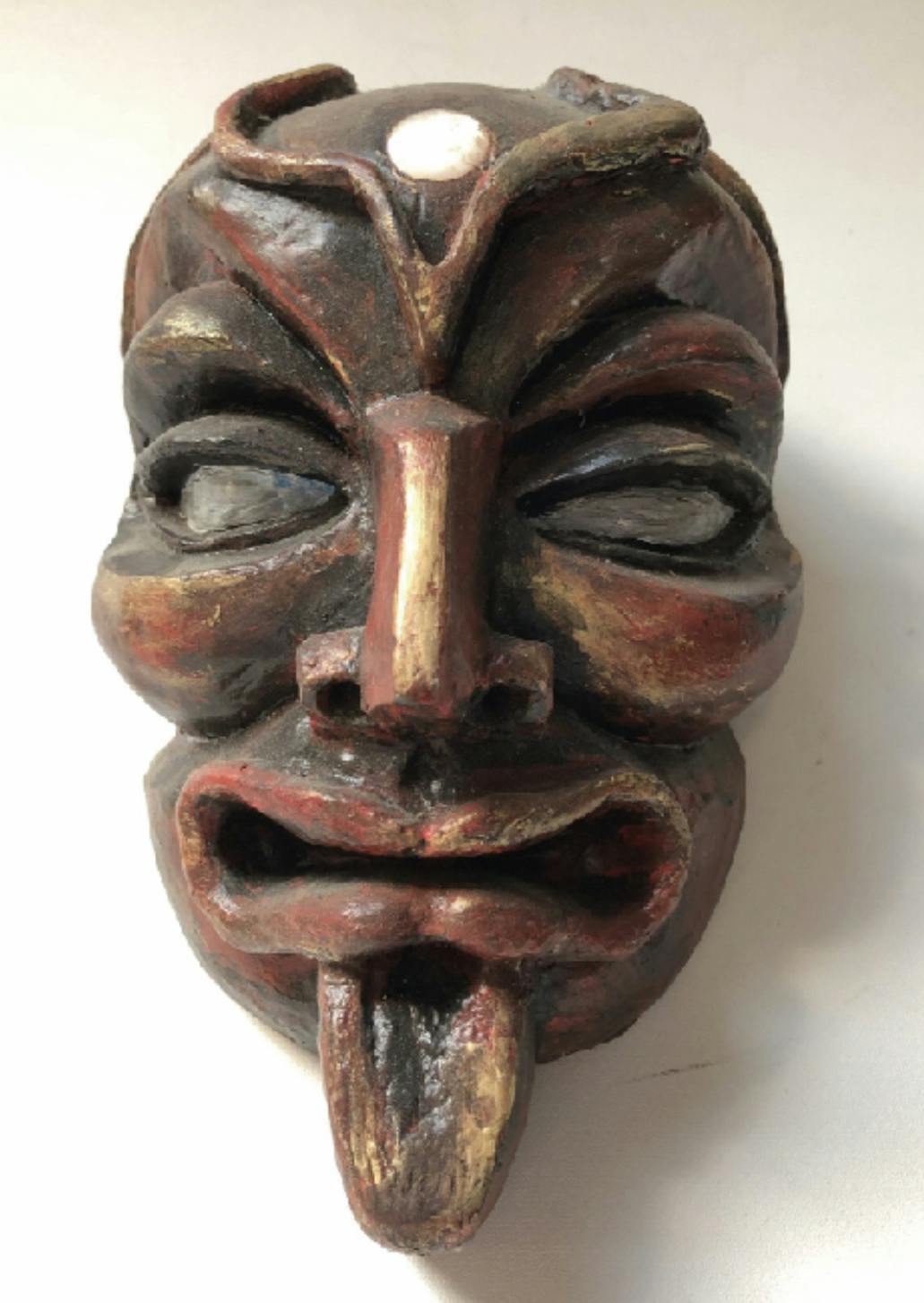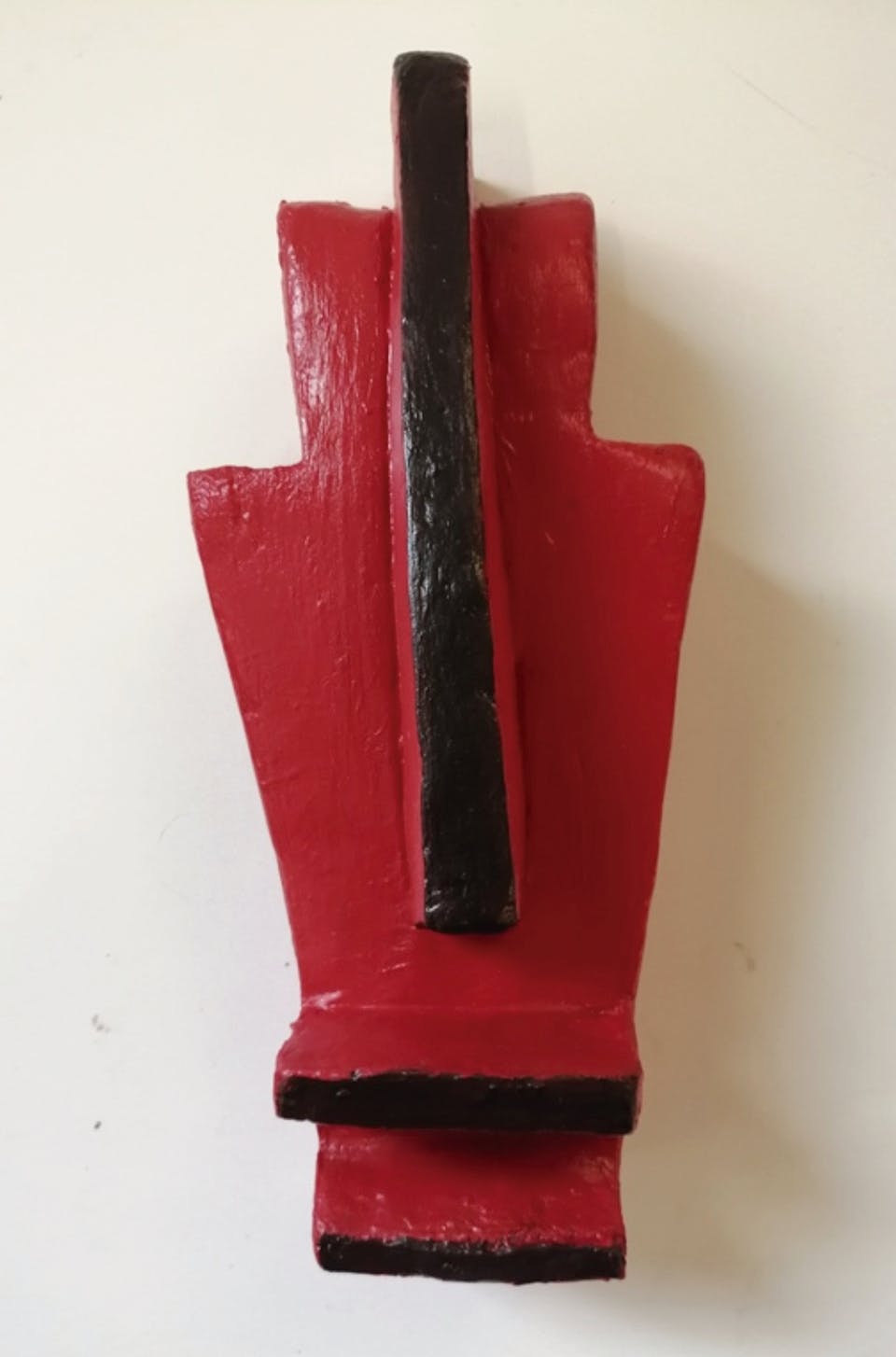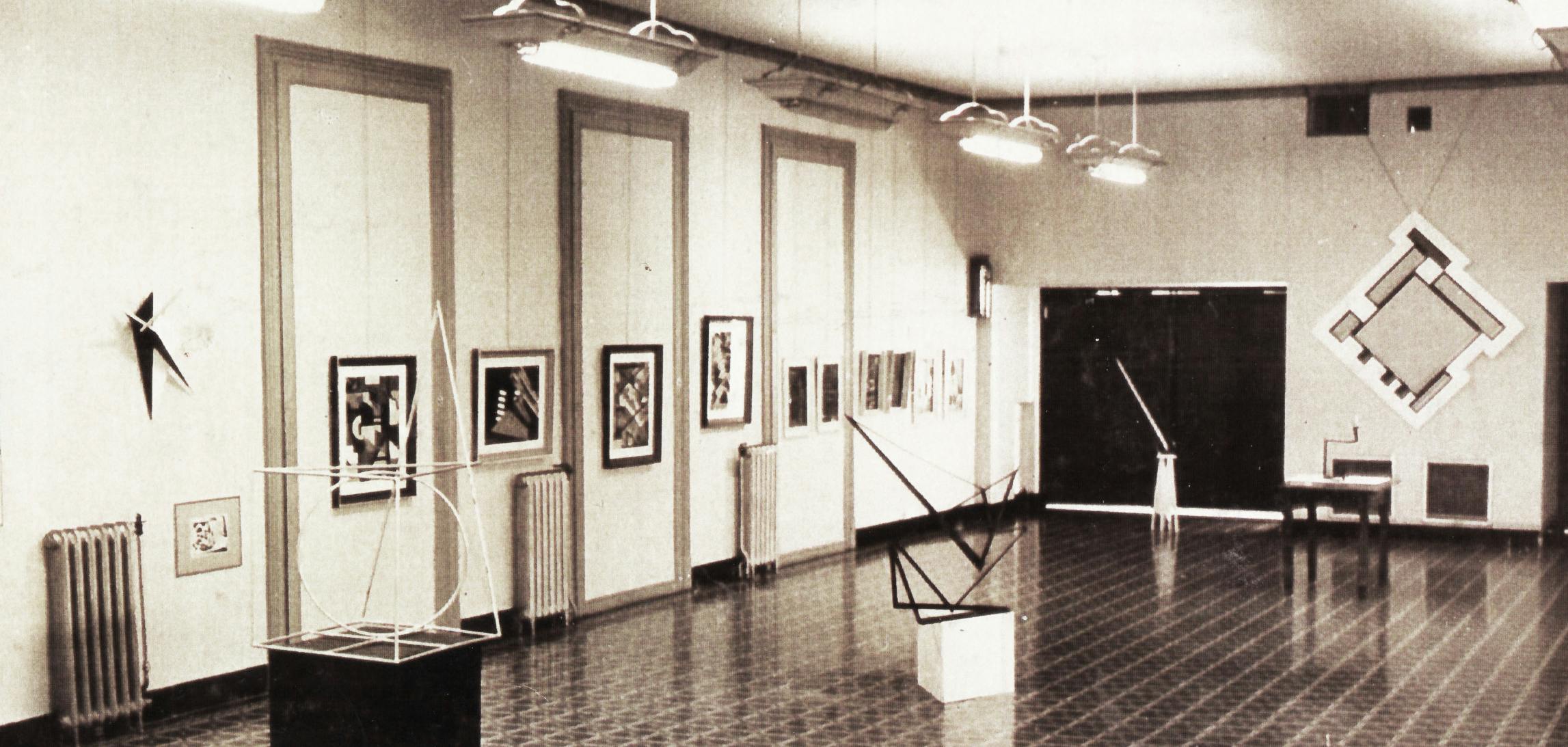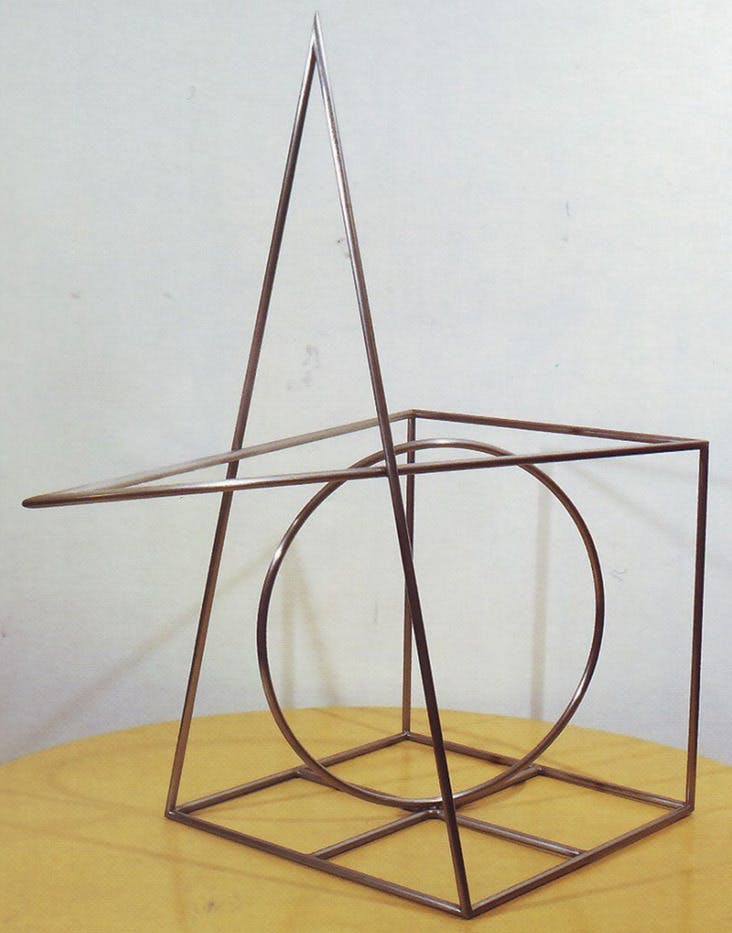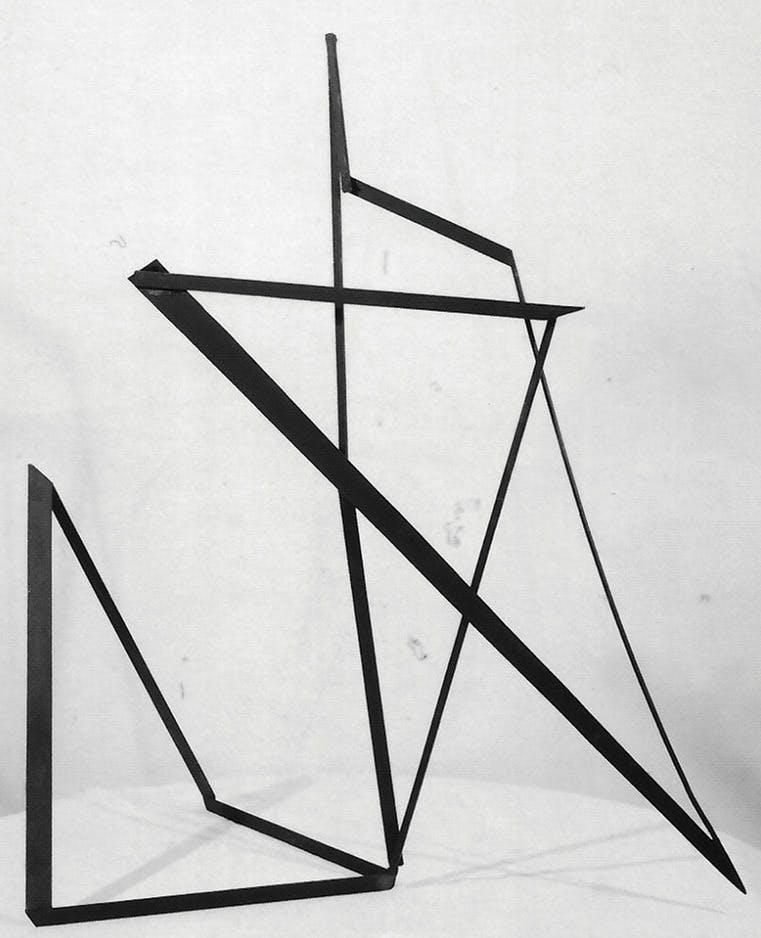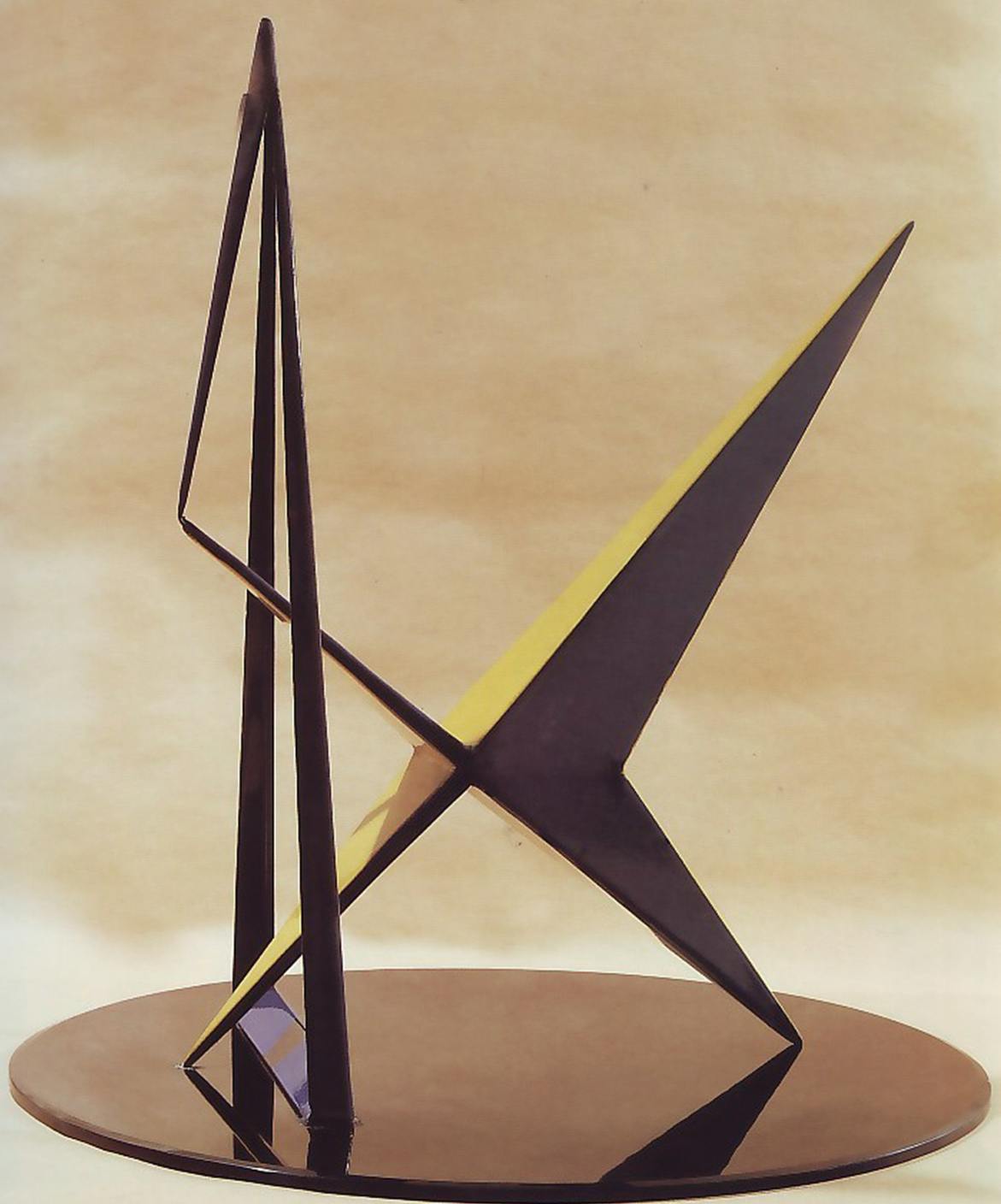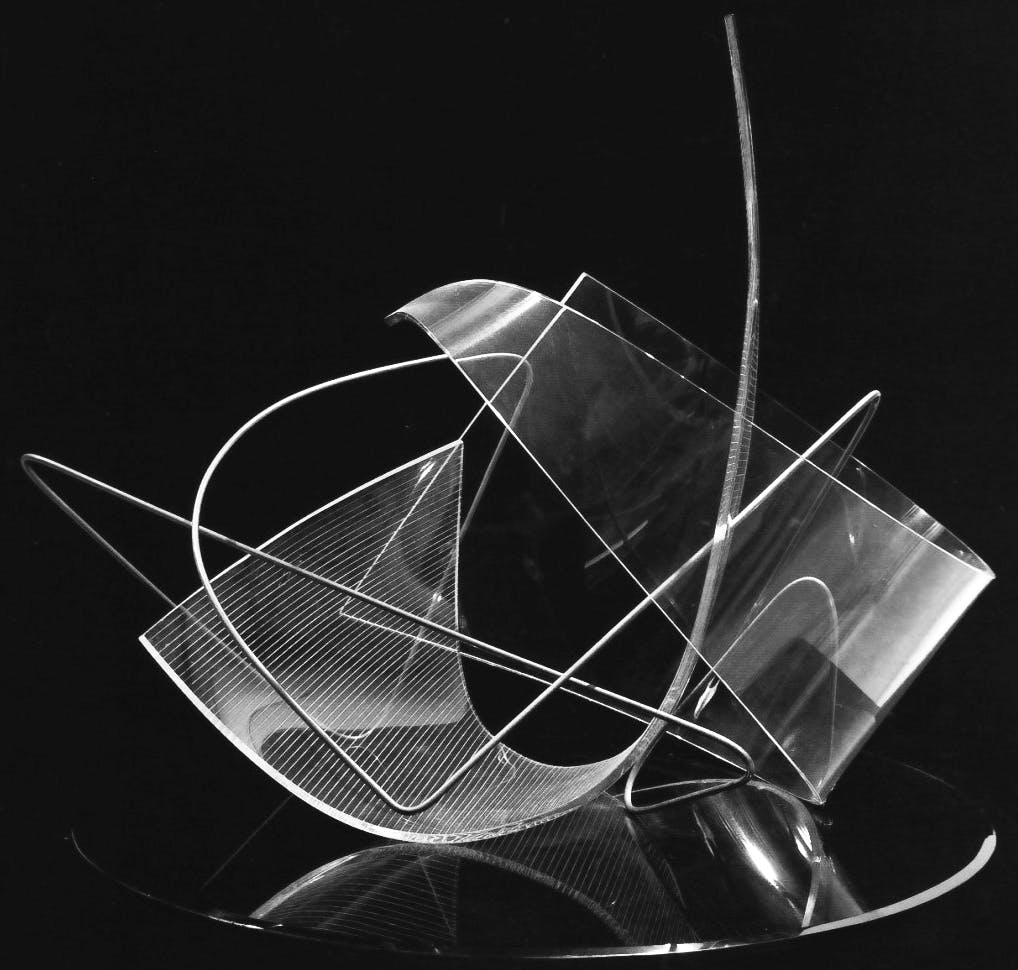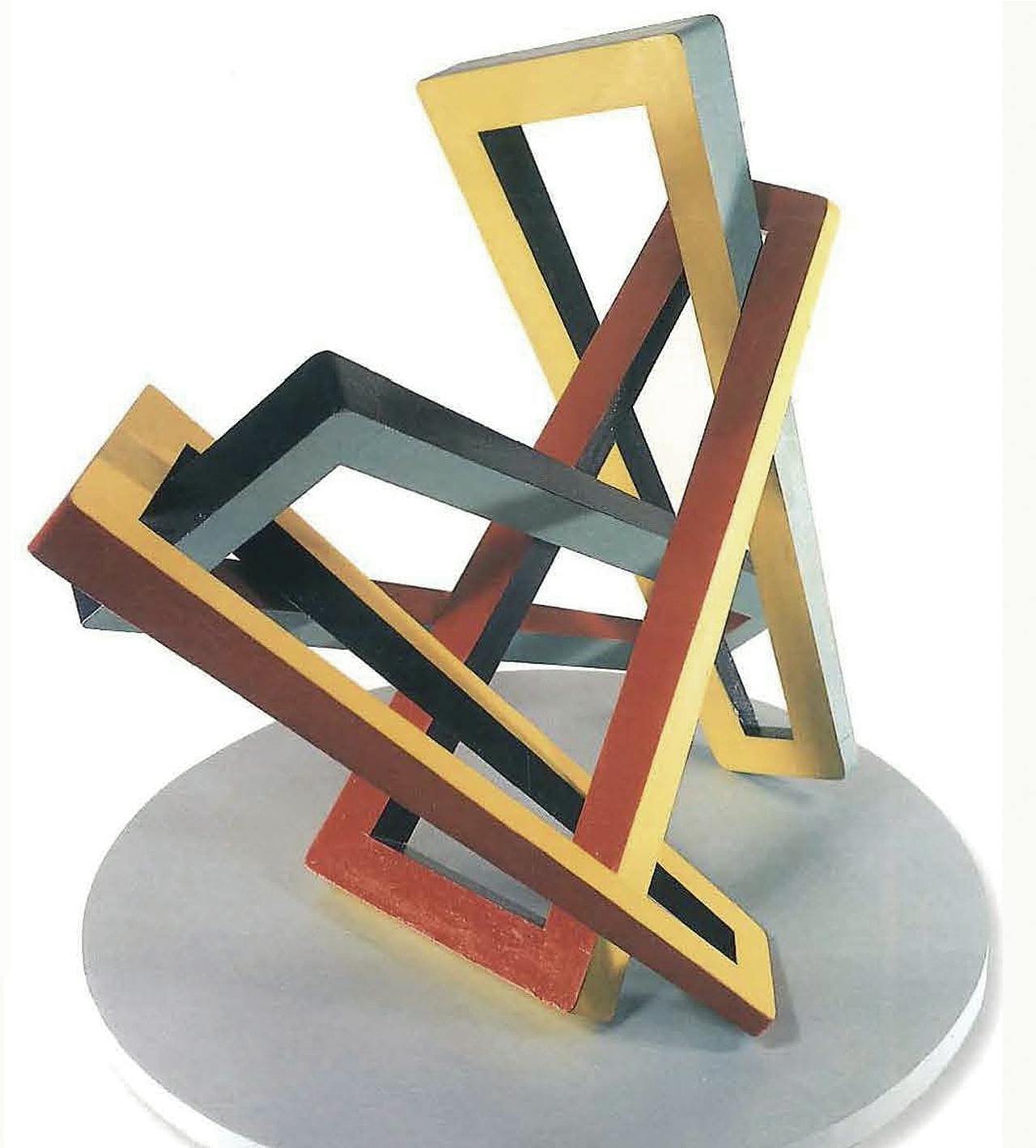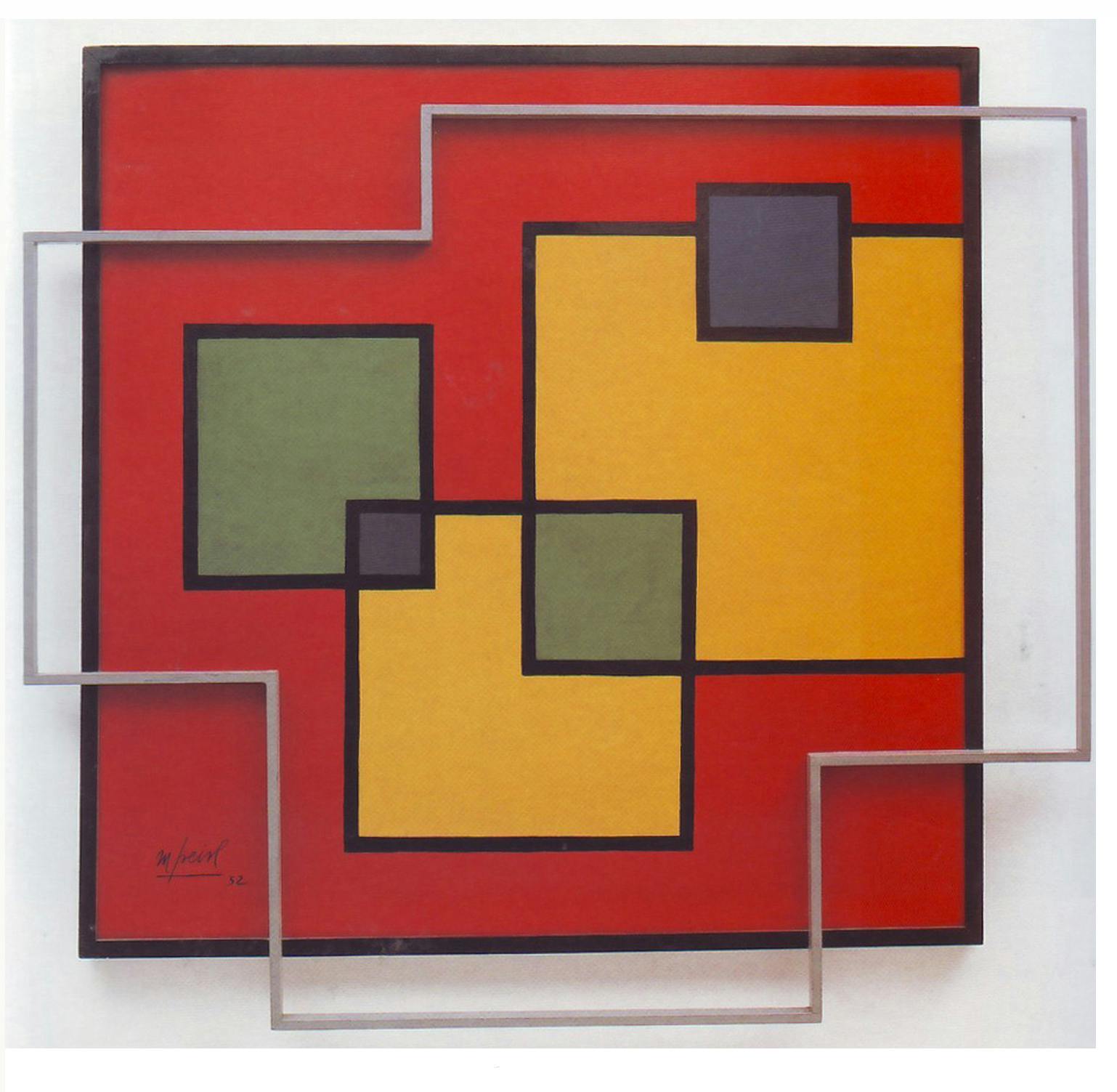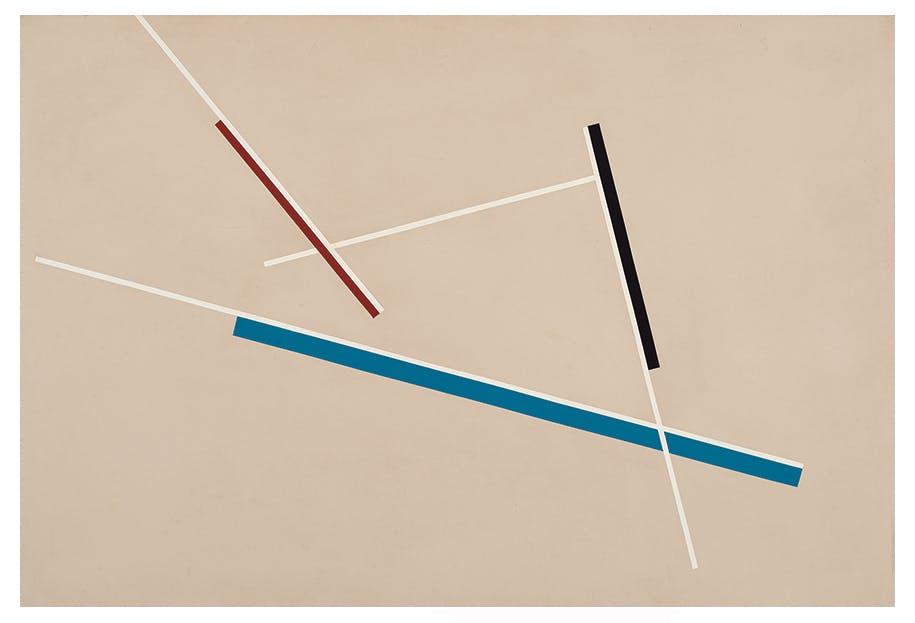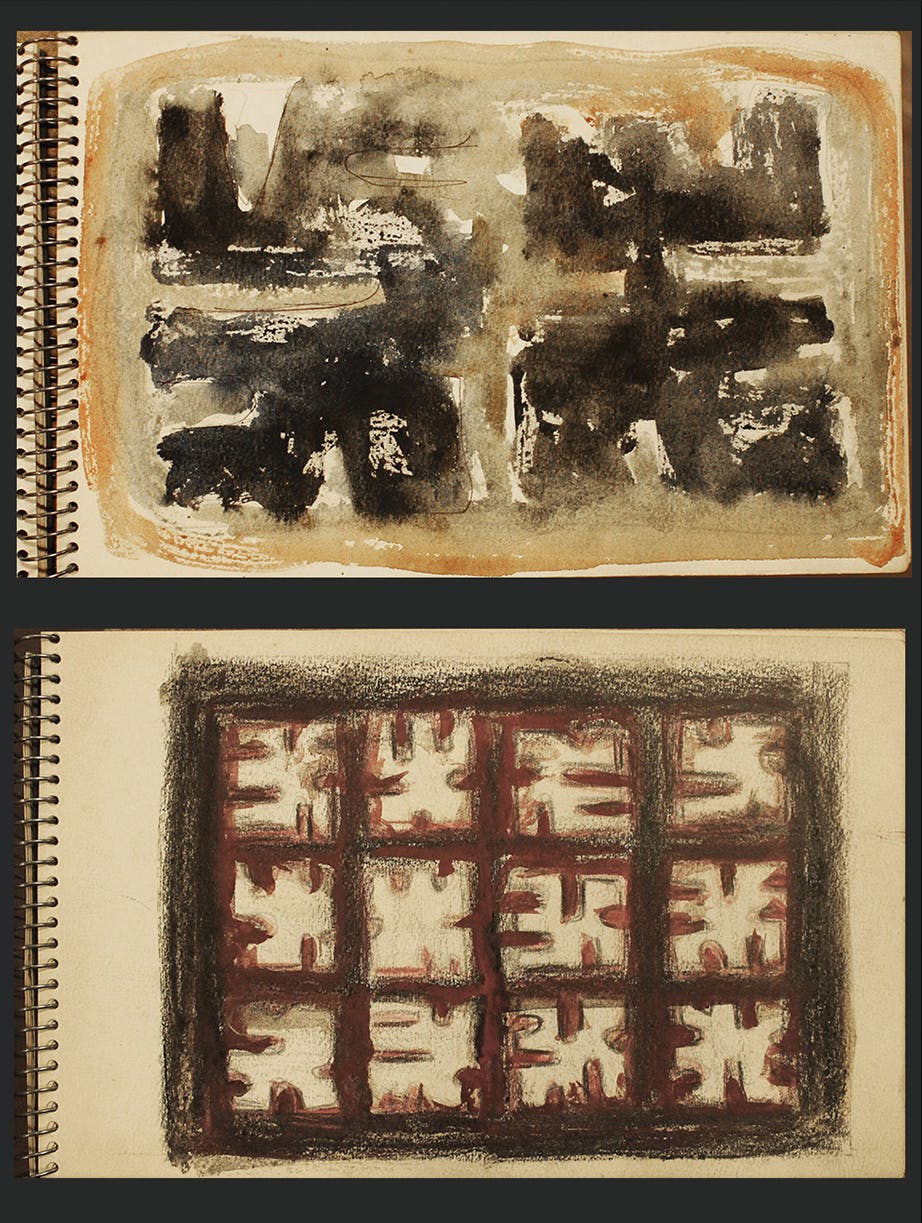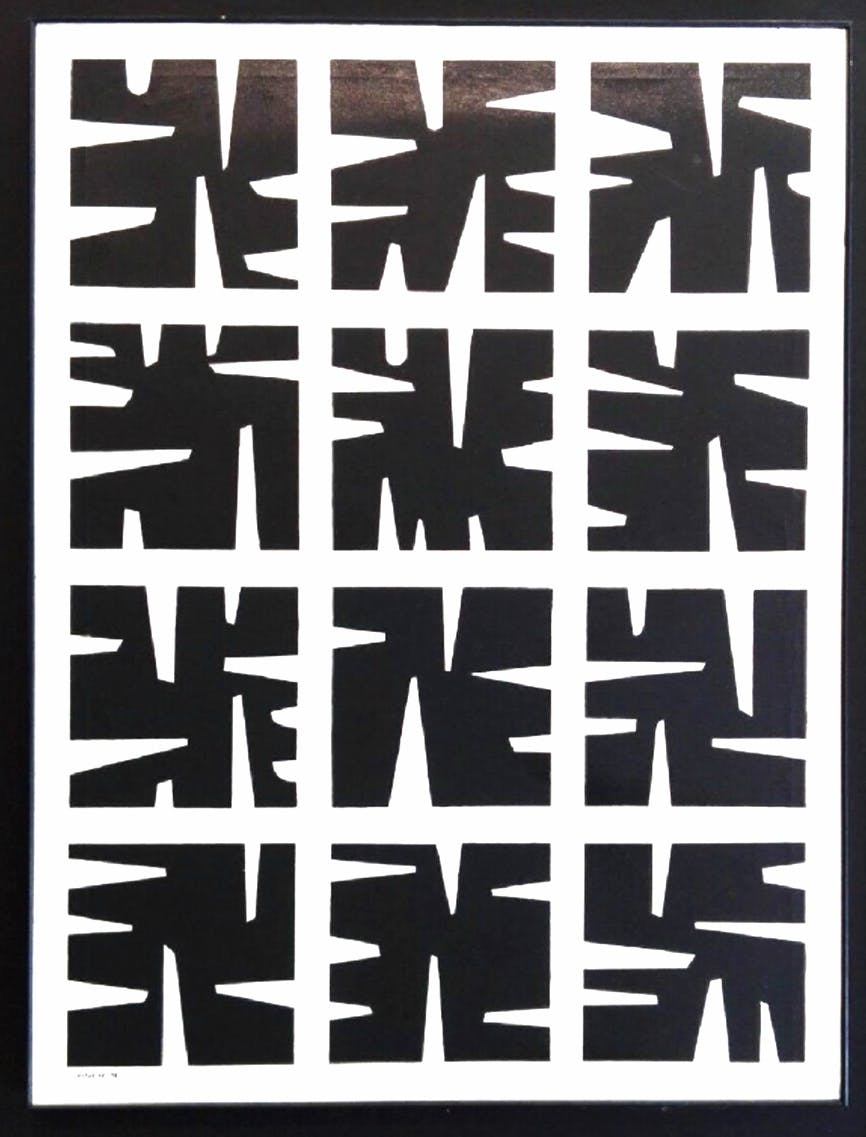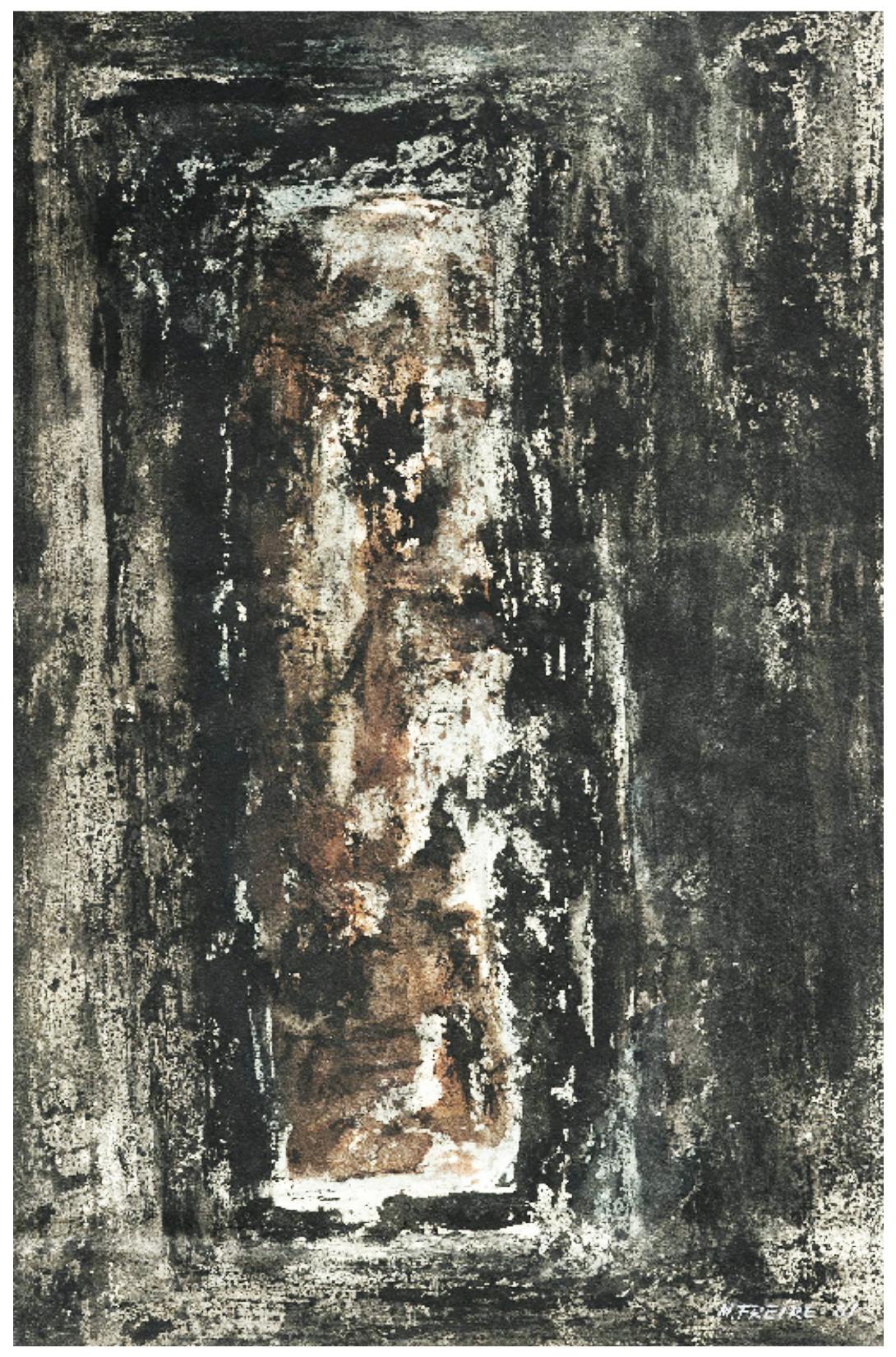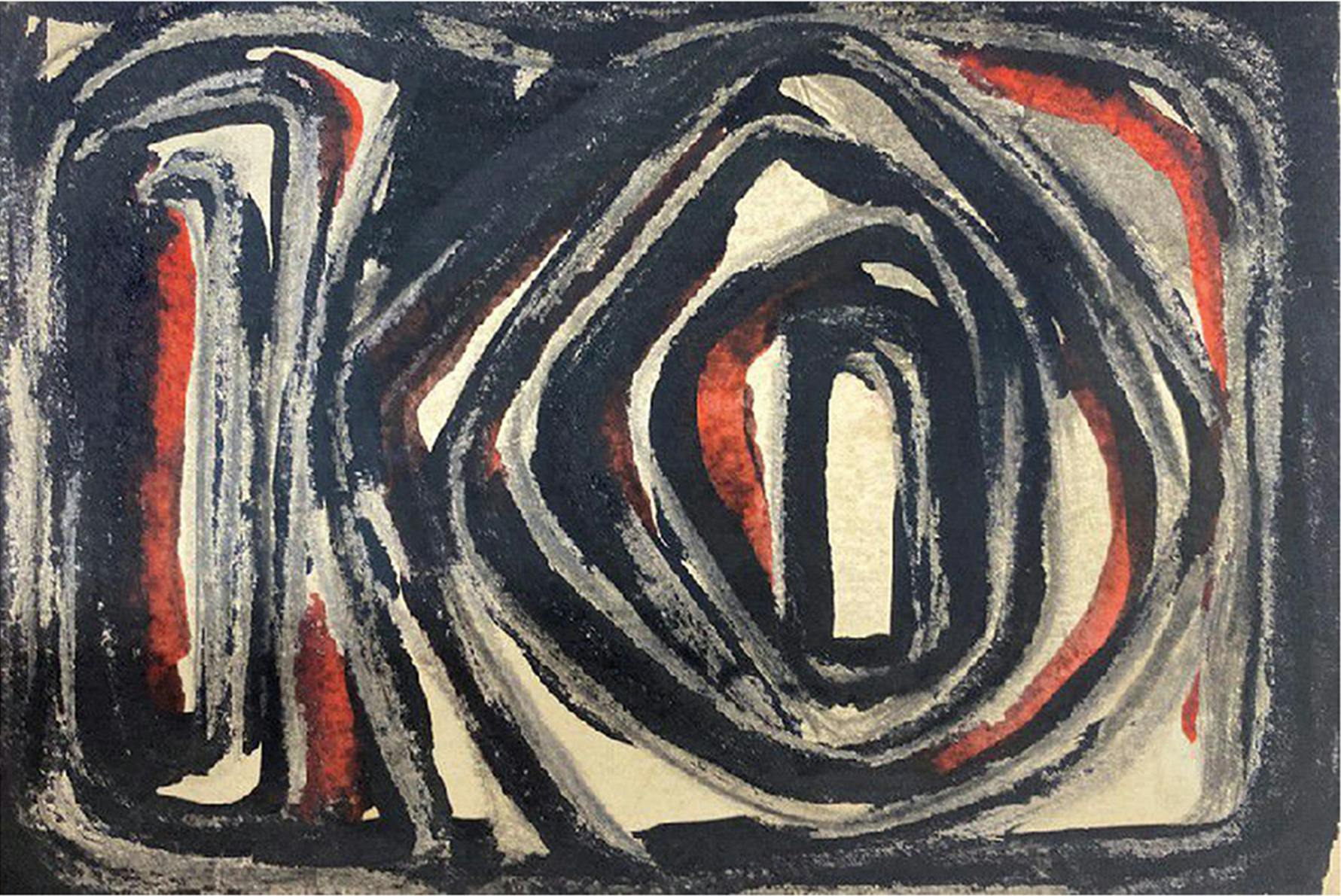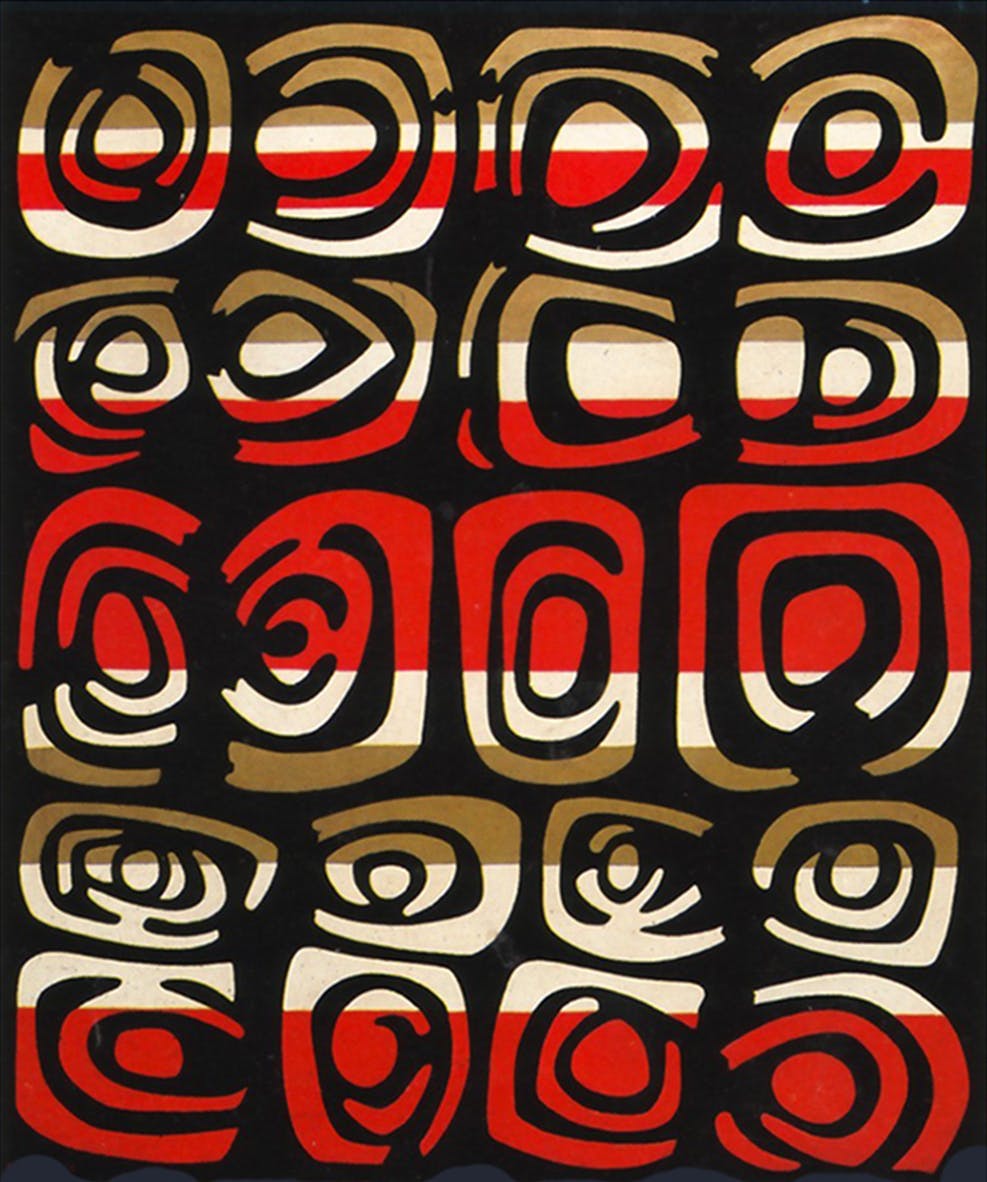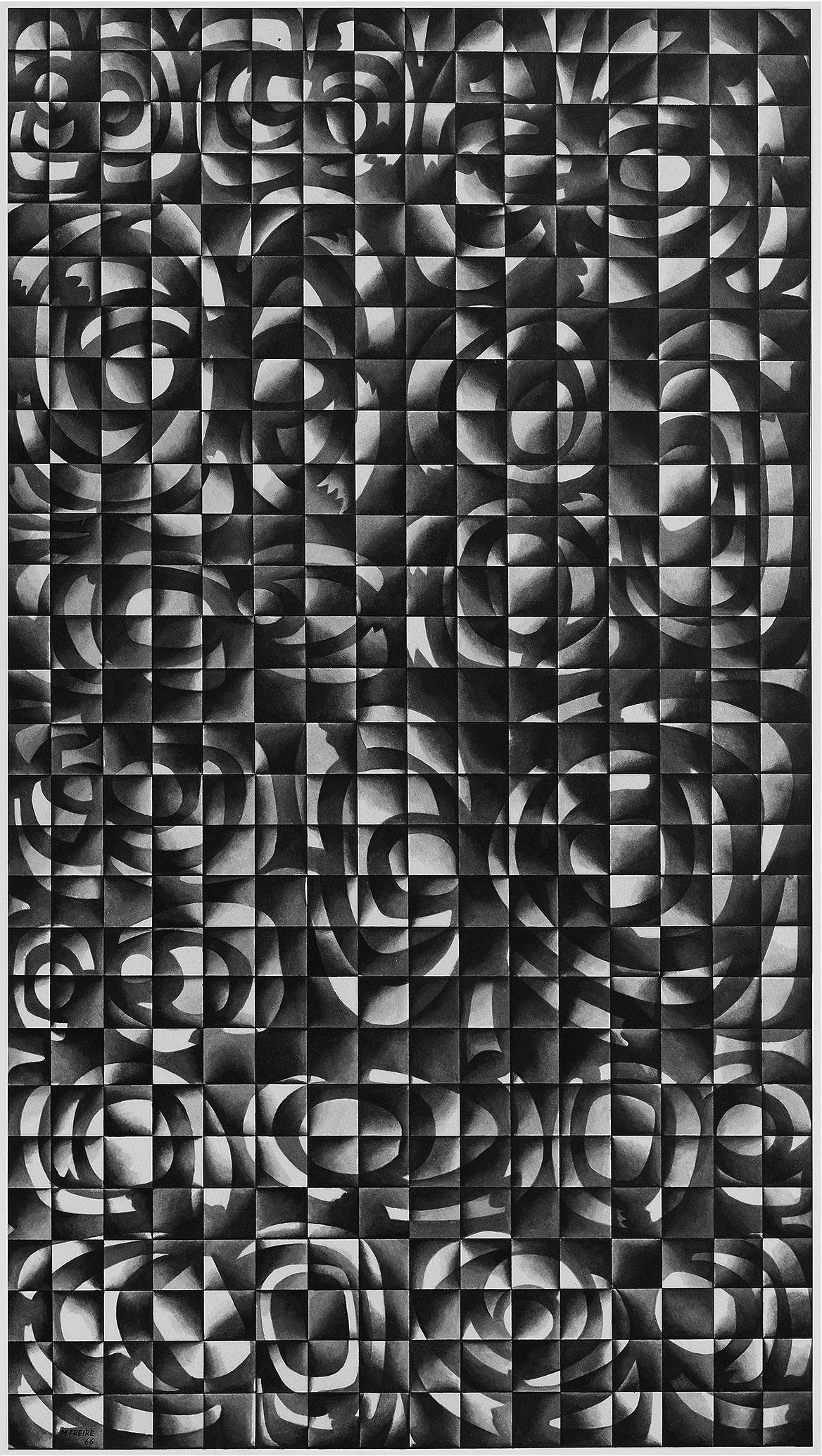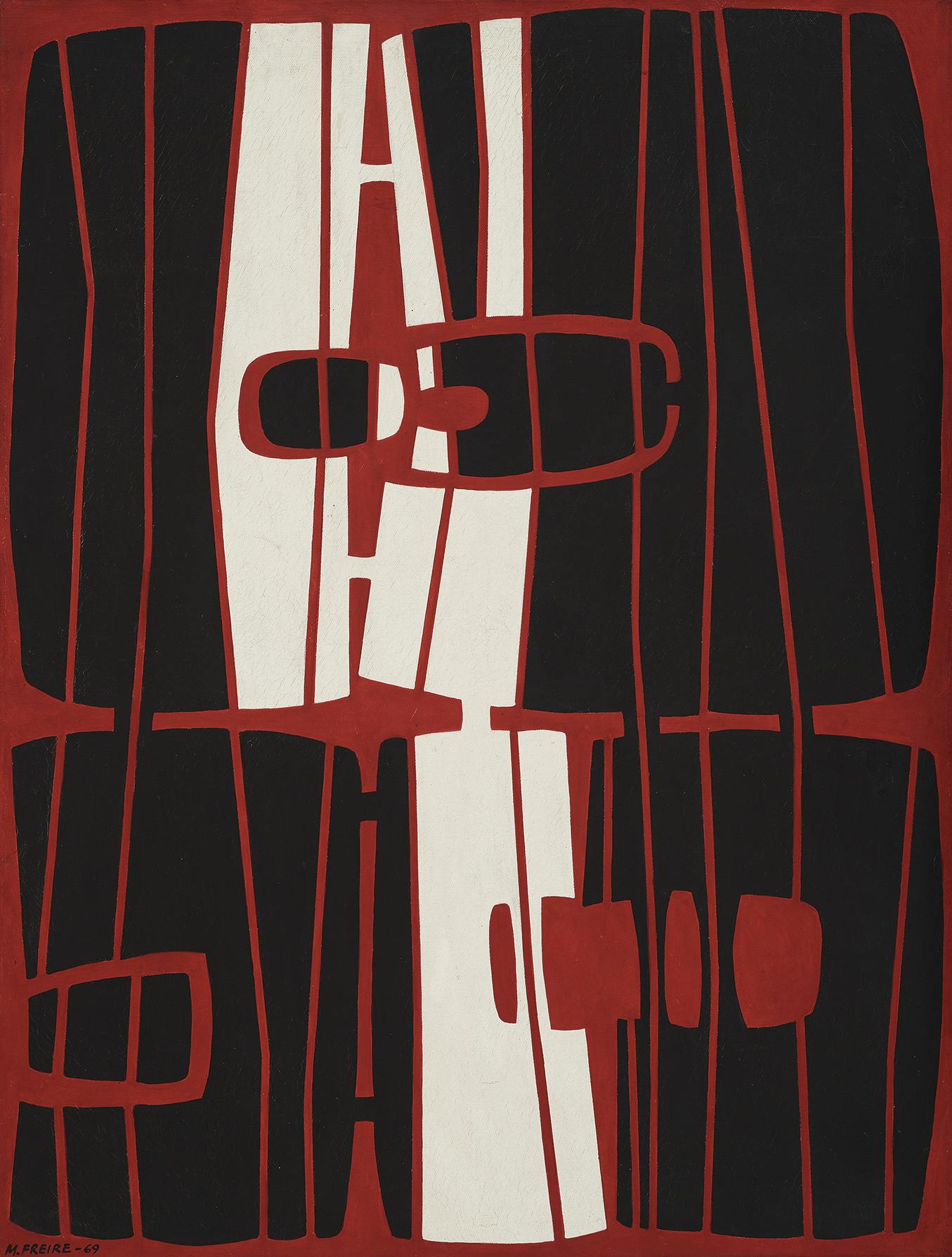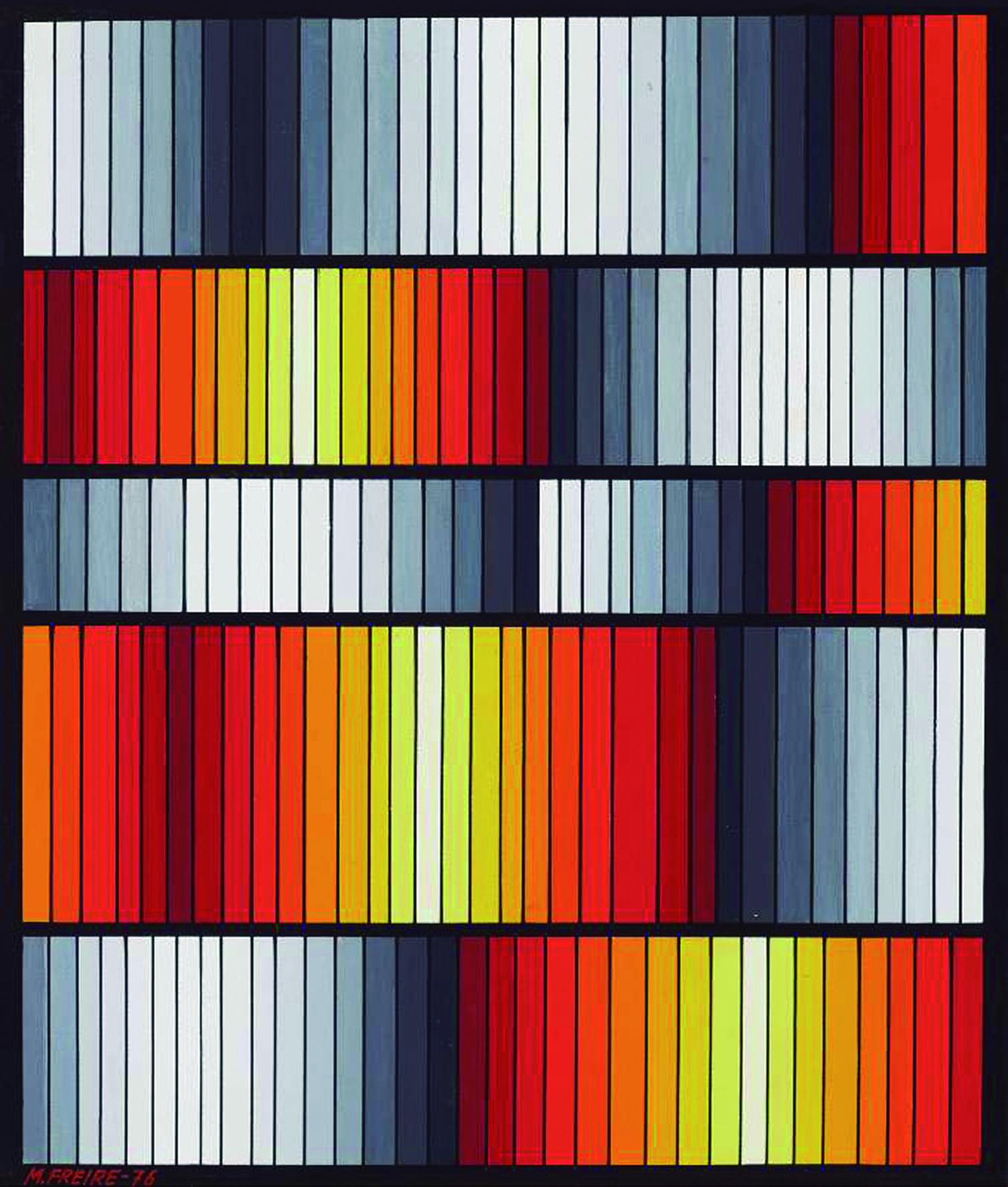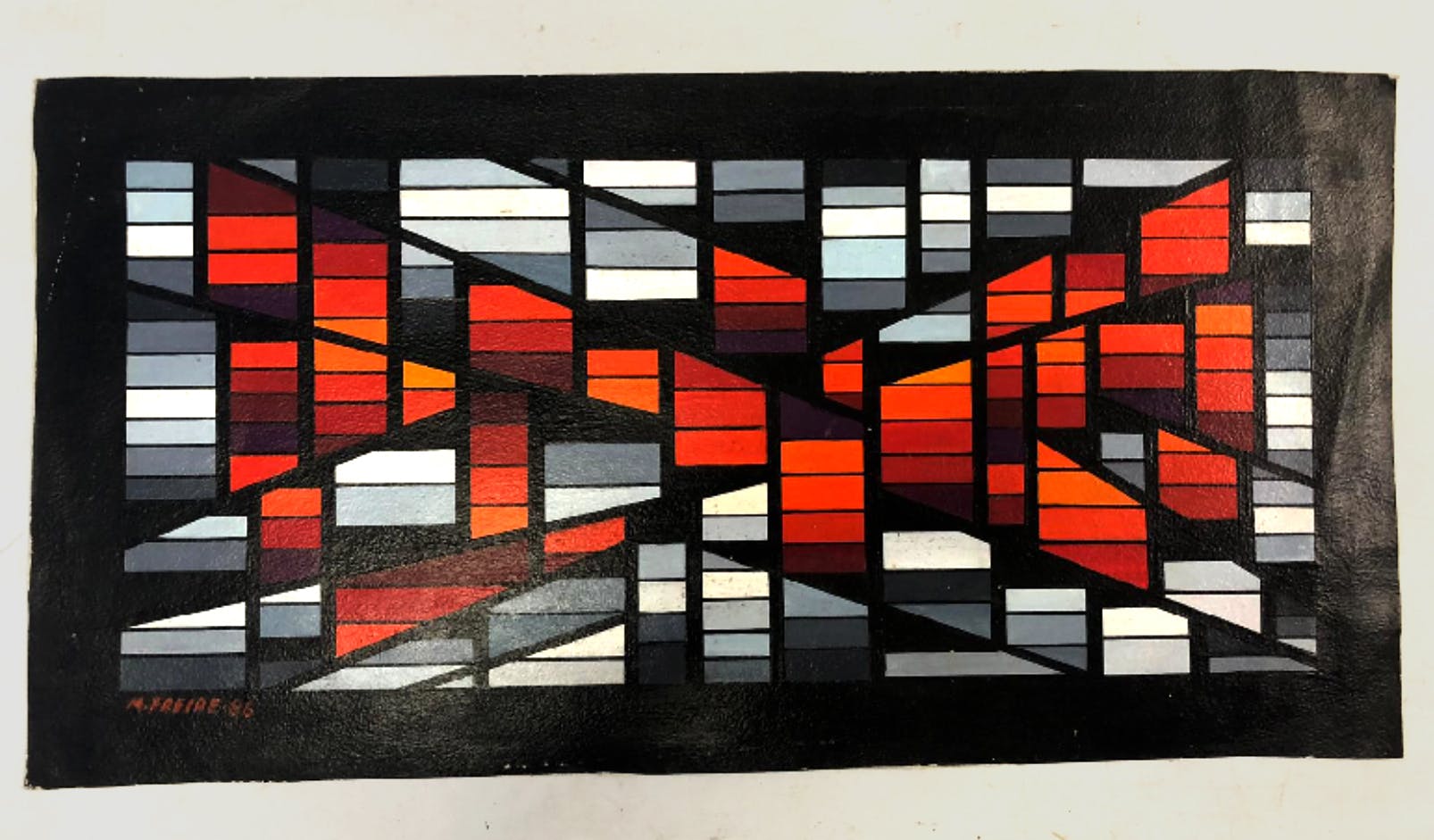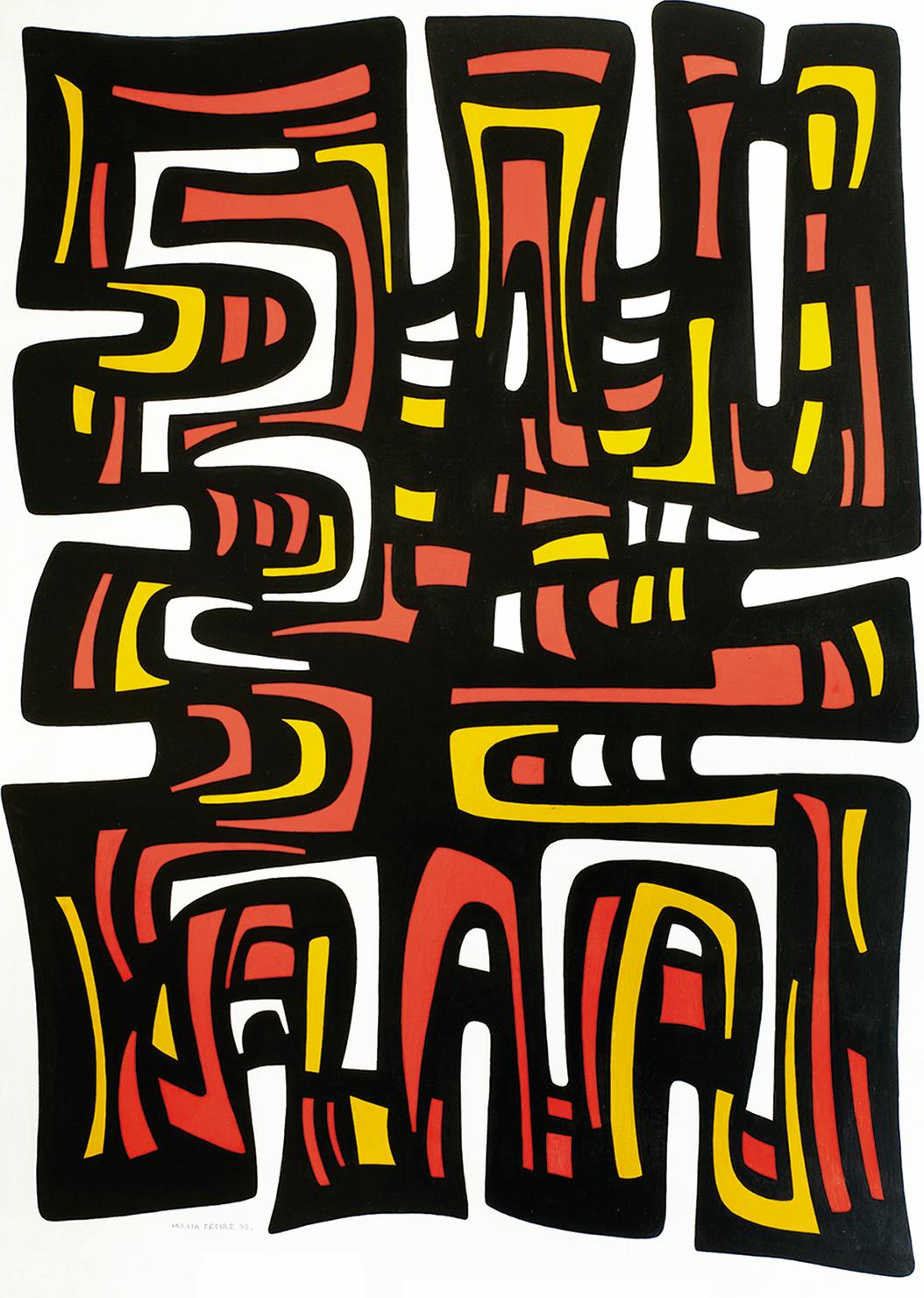From the Desk of. . . invites scholars to fill gaps in English-language reference materials on Latin American art by developing research on movements, geographies, and methodologies.
Abstract-concrete art in the Río de la Plata region was nourished by contributions from Europe, particularly through publications, artists, and intellectuals who had arrived on South American coasts during the lead-up to World War II. At the same time, this movement found its initial controversial impulse in the artist and theorist Joaquín Torres García, whose discourse implied a critical reconsideration of European avant-gardes by artists "from the South," and therefore lent support to the traction these avant-gardes were gaining in the early 1940s.
Since 1938, Torres García had drawn attention to the works of Amédée Ozenfant, Jean Arp, Piet Mondrian, Theo van Doesburg, and others in the Argentine newspaper La Nación, while on both shores of Río de la Plata publications were arriving that revisited the recent history of modernity in European art. However, the specific group of concrete artists that had been meeting in Buenos Aires since 1944—mainly composed of Argentine and Uruguayan artists 1 —had, from its conception, a contentious relationship (rife with both attraction and repulsion) with Torres García’s school. Among the Uruguayan members there were some who were briefly associated with Torres García's school, like Carmelo Arden Quin and Carlos María "Rhod" Rothfuss—but the newer group from Río de la Plata intended to move beyond that line of thinking, evading links to figurative schemes or to the esotericism of philosophical/religious theories.
Tomás Maldonado, who founded the Asociación Arte Concreto-Invención of Buenos Aires in 1946, wrote a manifesto titled “Torres García against Modern Art,” in which he said, among other things: “In Torres García’s doctrine, the word ‘Universal’ reeks of medieval scholasticism... Torres García… is incapable of appreciating the profound and emotional sense that throbs in a white, washable surface painted with lacquer...” 2 This concretism was thus born wedded to the cult of forms that come from industry and opposed to all sentimental or metaphysical biases in art.
Invention, pure perception, and structure are three conceptual axes on which concrete art from Río de la Plata was based in 1950. The group became known through the magazine Arturo, and in 1944 Rothfuss published “The Frame: A Central Problem of Contemporary Visual Art,” 3 where he stated that the rectangular frame was a bad habit from the Renaissance and proposed instead a painting-object whose irregular edges result from the expansive forces that struggle within the internal structure of each piece.
Even when European avant-gardes were indisputably and visually seductive to artists from Argentina, Brazil, and Uruguay, the adoption of those ideas and formal proposals was not understood as mere mimesis; rather, those methodologies were seen as instruments of language that were able to react to things that were happening locally.
The concrete-inventionist artists from Arturo magazine (which, again, divided into two groups in 1946: Asociación Arte Concreto-Invención and Movimiento Madí) carried with them a progressivist optimism inspired by the strengthening of Argentina's industrial infrastructure and by the fantasies promised by global technological development during the postwar period, within both the capitalist and socialist systems. 4 Also in Brazil, particularly in São Paulo, there was a similar optimism regarding the new horizons of industrial growth that Uruguay played a small part in, especially with the development of the country's manufacturing industry, which resulted from import substitutions due to World War II.
Beyond this context, which enabled local artists to expand their visual sense to include a geometric-rationalism, there was indeed an influx of information about the avant-garde coming from foreign publications. In the case of Argentina, this knowledge also came from contact with transatlantic exiles such as German photographer Grete Stern, who brought her own experiences with the Bauhaus, or Austrian psychoanalyst Marie Langer, whose work accompanied that of social psychologist Enrique Pichon-Rivière, both cofounders of Argentina’s school of psychoanalysis.
The core of the concrete art movement, which had started to hold meetings in Buenos Aires, convened frequently at Pichon-Rivière’s home. 5 There they discussed the psychic aspects of artistic production, which led them to consider Surrealism 6 and to reformulate the idea of rationality in the legacy of avant-gardes. The group also became interested in the field of design, due to their proximity to Stern and her photographic practice.
In Rio de Janeiro, first-wave geometric artists, like Almir Mavignier and Ivan Serpa, worked from 1946 to 1948 in the program “Arte y Terapia” at the Centro Psiquiátrico Nacional Pedro II, coordinated by Dr. Nise Da Silveira and heavily influenced by French psychiatrist Henri Wallon. Moreover, Serpa, cofounder of the concrete art group Frente, had also worked in a similar vein on a painting course for children at the Museu de Arte Moderna in Rio de Janeiro (MAM). Based on these experiences, Pernambucan art critic and essayist Mário Pedrosa, ideologist of the group, published his 1949 thesis, “On the Affective Nature of Shape in the Work of Art.” Abstract-concretism from Rio de Janeiro thus emerged committed to the emotional dimension of subjectivity in the conflictual framework of modernity, which highlighted its uniqueness in comparison to the strict rationalism of concrete art in São Paulo.
In Uruguay, Freire began her first investigations into abstract art while directing a workshop for high school students.
In Uruguay, María Freire (Montevideo, 1917–2015) began her first investigations into abstract art while directing a workshop for high school students from 1945 to 1950. In tandem with that, she also organized exhibitions and debates around emotional and conceptual issues within modern art.
These facts confirm that the gestation of Geometric Abstraction, and with it, local concrete art, took place because of local conditions that encouraged new ways of experiencing aesthetics in the social realm. In Europe Geometric Abstraction sought, according to some traditional historiography, to keep the idea of rationalist progress alive, especially in the face of the devastating effects of the Great War. However, in 1940s Latin America, abstract-geometric art followed the promising horizon opened up by the accelerated industrialization of countries like Argentina and Brazil and the aesthetic influence of both Sigmund Freud and Carl Jung’s work, which were considered liberatory tools for the modern subject.
This approximation toward concrete art meant a radical departure from art that was tied to national identity, which appeared not only in local landscape painting, but also and especially in the social realism of David Alfaro Siqueiros, Demetrio Urruchúa, and Candido Portinari that emerged in Río de la Plata.
In the case of Uruguay, the first experiences geared toward Geometric Abstraction were based on two of the country's long-established pedagogical models. The first was the so-called escuela planista, or “planar school,” which was active between 1920 and 1940. This school attempted the pictorial representation of volumetry and chiaroscuro through color planes in the form of rigidly cut-out facets, which implied an analytic operation of not only color, but its geometric backing. Torres García’s workshop encouraged the study of forms in their most elemental structure, but its doctrinal orientation took a more philosophical and existential approach. Thus, it rejected other positions that were merely formalist or aesthetic.
The second approach came from a method of teaching sculpture that aimed to look at the internal geometry of objects and bodies, as well as their structural principles. This was taught by Argentine sculptor Luis Falcini at the Círculo de Bellas Artes in Montevideo. It was also espoused by European schools where Uruguayans with fellowships studied—mainly the programs of Antoine Bourdelle and Anton Hanak, the latter a proponent of the direct carving process which required a structural study of form.
María Freire began her studies under the Uruguayan sculptor Antonio Pena—disciple of Hanak in Vienna in the mid-twenties—who, according to the artist, taught her “to build and maintain a shape in space through geometry.” Interview with the artist conducted by the author on May 27, 2003. Later on, Freire taught drawing courses in the city of Colonia del Sacramento in Uruguay, where she met Rothfuss in 1950 and, through him, encountered news of the concretist avant-garde in Buenos Aires. During that decade, aside from traditional portraiture, she made variations on the subject of the mask. She frequently visited the replica of Michelangelo’s Head of a Faun at the Museo Nacional de Bellas Artes in Montevideo (now called Museo Nacional de Artes Visuales), and, based on this, made some studies in polychrome plaster. Some of these have been preserved, dating from between 1938 and 1940 (fig. 1).
During the late forties and early fifties, the magazine Art d’aujourd’hui was starting to be distributed in Montevideo, and through this Freire became familiar with Russian Constructivism and Dutch Neoplasticism. She was also able to see works by Piet Mondrian, Kazimir Malevich, Friedrich Vordemberge-Gildewart, Hans Hartung, Alexander Calder, and Henry Moore, most of whom she would later be able to meet personally during a trip to Europe.
The Argentine magazine Nueva Visión, founded in 1951 under the direction of Tomás Maldonado, was also for the artist an unavoidable source of information on abstract-geometric art and the topic of form in relation to issues surrounding art and design. 7 But it wasn’t only foreign publications that were fundamental to the changes the artist imprinted on her work; so was, in a decisive way, her encounter in 1952 with Uruguayan painter José Pedro Costigliolo, 8 with whom she would have a prolific relationship and make decisive contributions to Uruguayan art during the second half of the 20th century.
From then on, Freire's sculptural and pictorial work was based on an elemental geometry devoid of all figurative vestiges.
From then on, Freire's sculptural and pictorial work was based on an elemental geometry devoid of all figurative vestiges. In her sculpture, she frequently privileged the articulation of component parts and a transformation of form in space. Freire states that her intention at the time was to return form to the constructive dignity it had in the twenties: “I would use geometry, but I was not making geometry: I was making space and time as a plastic feeling, not a geometric one. It was a made-up geometry, but used by me in a plastic way.” María Freire, interviewed by the author, May 27, 2003, Montevideo.
In 1952, the first non-figurative art exhibition opened in Montevideo under the direction of Freire, Costigliolo, Rothfuss, and Antonio Llorens. This group represented “hard” geometrism in the local abstract art scene, especially when compared to other artists who practiced an abstraction rooted in figurative modes. Around that time Freire exhibited two sculptures—one of them with clearly articulated black iron bars and the other with chrome-plated iron rods that formed squares, triangles, and a rotating inner circle (fig. 2).
In other works exhibited at the 2nd Non-Figurative Art Exhibition held in 1953, and the exhibition 19 artistas de hoy that took place in 1955, she used resources that the national industry was able to provide her. This is the case, for example, with Proyecto para una fuente (fig. 3), which is part of a group of pieces made from enameled sheet metal with the support of Kraft Imesa, a metallurgical company based in Montevideo. She also turned to the DuPont car dealership in Uruguay to make some of her projects with acrylic sheets (fig. 4). María Freire, interviewed by the author. Ms. Susana Freire—niece of the artist, currently based in Brazil—states that they once visited “a factory to look for flat transparent acrylic sheets, so that a technician could put them inside some barrels in a liquid that would soften them. In the meantime, María would tell them the curvature she wanted.” Susana Freire, email to the author, July 22, 2017. She took cardboard models to those factories so the technicians could make them with corresponding materials. She also did this so the work took on industrial characteristics, not only because of the formal perfectionism with which it was conceived, but also because it was a mechanical product of industrial technology.
Another aspect that can be linked to the industrialist imaginary was her early adhesion to Costigliolo’s pictorial procedures: pyroxylin lacquer paint applied with a paint sprayer using openwork stencils. With this system, any trace of manual or artisanal gestures disappeared, achieving results closer to the coldness and anonymity of industrial objects. Van Doesburg, in his 1930 publication Art Concret, said: “La technique doit être mécanique, c’est-à-dire exacte, anti-impressionniste.” ("Technique must be mechanical, meaning exact, anti-impressionist.”) The traditional prestige of craftsmanship was eclipsed by the intellectual value of imagination applied to a universe of abstract forms, the likes of which could be made through industrial procedures or manual techniques that would yield results similar to industrial perfection.
Freire brought the Uruguayan team into the 2nd São Paulo Biennial (1953) and later, to the 4th Biennal (1957), where she received the prize of honor. In 1956, she traveled with Costigliolo to São Paulo to do a joint exhibition at the Museu de Arte Moderna and met, among others, Lothar Charoux, member of the concrete group Ruptura, founded by Waldemar Cordeiro in 1952. Freire and Costigliolo’s exhibition coincided at that time and place with the 1st National Exhibition of Concrete Art (which included both concrete art and poetry), which Augusto de Campos—essayist and creator of the São Paulo group of concrete poetry—helped organize, and who sixty years later would say: “I am under the impression that María Freire approached concrete and geometric art when the movement was already consolidated among us,” Tania Rajczuk Dombi, "Poema-pintura e pintura-poema: diálogos entre Augusto de Campos e María Freire," in Arte concreta e vertentes construtivas: teoría, crítica e história da arte técnica (Jornada ABCA) — Comunicadores (Mina Gerais: Editora ABCA, 2018), 358. which is undoubtedly true. The following year, Freire exhibited at the MAM in Rio de Janeiro, where she met Serpa and Décio Vieira. This contact with important Brazilian colleagues, while initially indirect due to the work of Walter Wey, cultural attaché of the Embassy of Brazil in Uruguay, happened through Brazilian artist Livio Abramo, whom Freire met in Montevideo in 1955.
At the 2nd Non-Figurative Art Exhibition, held in 1953, María Freire presented a transformative figure made of painted wood that comprised four interlocking trapezoids (fig. 5), as well as a high-relief enamel on wood (fig. 6). Freire never hid her admiration for Vordemberge-Gildewart’s work, Freire had the chance to see works by Vordemberge-Gildewart at the São Paulo Biennal in 1953 and the following year at the Comisión Nacional de Bellas Artes in Montevideo, as part of the exhibition Pintura Contemporánea de los Países Bajos, in which there were also works by van Doesburg, Mondrian, and others. which explained the formal coincidences between her high-relief from 1953 and a work by the latter published in the magazine Art d’aujourd’hui in January 1950. There were other similarities between her paintings from that time and Vordemberge-Gildewart’s Dutch period (fig. 7), which supported the idea that there was an early intellectual link between María Freire and the German artist. When she visited his workshop at the Ulm School of Design in 1959, she admitted that his work had been a reference both for her and Costigliolo in the fifties.“ We had studied Vordemberge-Gildewart through his works at the 2nd São Paulo Biennal (1953), in Montevideo (1954), and later on in The Hague and Amsterdam. In Nueva Visión we would read his essays; that is why we wanted to meet him.” María Freire, travel journal, 1958–59, 149. In that sense, it could be stated that, for a number of reasons, concretism in Uruguayan art, mainly represented by Freire and Costigliolo, was always closer to Vordemberge-Gildewart’s spatial style than to Max Bill's "Die gute Form." Bill’s ideas were transmitted from Buenos Aires through the magazine Nueva Visión and through a book on his work published by Tomás Maldonado in 1955.
The fact that Bill won a prize at the 1st São Paulo Biennial in 1951—and later arrived in Brazil himself His ties with Brazil were formed by the end of the forties, when French-Brazilian artist Samson Flexor (leader of the Atelier Abstração) came into contact with Bill, who, after that first meeting, would travel in 1950 to do a show at the MAM in São Paulo. —may indicate the influence he had in the region, especially on abstract artists from São Paulo. With many of them as students or faculty he created the program Hochschule für Gestaltung in Ulm, which brought artists Geraldo de Barros, Alexandre Wollner, Almir Mavignier, Mary Vieira, and Argentine Tomás Maldonado to Germany. The Escola Superior de Desenho Industrial (ESDI), founded in 1963 in Rio de Janeiro, was also modeled after Ulm. While he was also influential in Rio de Janeiro, it was fundamentally the lyrical vision of Calder—exhibited at the MAM in 1948—that was best received by the concrete art circle when it first materialized around Serpa and Pedrosa. The artists that comprised the group Frente included, among others, Aluísio Carvão, Lygia Clark, Rubem Ludolf, Abraham Palatnik, Lygia Pape, Hélio Oiticica, Décio Vieira, and Franz Weissman.
Vordemberge-Gildewart and Bill shared the same intellectual sources, but Bill's formal imaginary assumed that the “good form,” which resulted from geometric-mathematic matrices, was all-embracing, and that its functionality encompassed environmental design in general. For his part, Vordemberge-Gildewart’s formal thinking, while apt for teaching design, moved within geometric structures with more of a spatial than object-based logic, more rhythmic than formal, with a conceptual essence and a functionality that enhanced the poetic dimension of abstract art.
During her tour around France, Belgium, the Netherlands, Italy, Spain, Germany, and England, Freire had direct contact with artists Nikolaus Pevsner, Calder, Vondemberge-Gildewart, Moore, Hans Hartung, and Ángel Ferrant, among others. The relationships Freire had with prominent artists in Europe generally arose in a very spontaneous (and sometimes casual) way. For example, she met sculptor Alexander Calder unexpectedly on a street in Paris on March 5, 1959 and subsequently visited his exhibition at Galerie Maeght. This experience allowed her to familiarize herself with the concrete art scene in Europe during a time when Informalism and Abstract Expressionism were gaining momentum. The United States's foreign policy support for Abstract Expressionism and the tension this new international style created by spurring informalist movements in France and Spain seemed to indicate that the purist aesthetics of concrete art were entering a crisis of faith. Freire, however, was less worried about geometric purism than she was about the problem of form, not only because of its structure but also its symbolic connotations. The research she did at the Stedelijk Museum in Amsterdam and at the Musée du Louvre, in addition to visits to different historical centers and meetings with different artists, allowed her to perceive certain historical constants in Western art, present in Romanesque frescos, medieval blacksmithing, Gothic stained glass, the Byzantine capitals of Ravenna churches, and also in contemporary works. The tradition of the geometric schemata and rhythm persisted across different periods throughout history. Reflections about these experiences led her to make a series of paintings she called Sudamérica. She started this series in 1958 in Europe, but continued working on it when she returned to Montevideo. The idea is a form-sign, a unit (generally with a serrated profile) reiterated in sequence with slight formal alterations. In 1953, at the 2nd San Paulo Biennal, Freire had been able to see the series of collages and paintings that Lygia Clark had been making since 1952, which also feature consistent form-signs done in modular series. The artist reflected that the forms may have come from her attraction to locks and keys made by medieval blacksmiths at the then-called Musée des Antiquités Nationales in Saint Germain-en-Laye, France:
“It was then that I felt more strongly the presence of the sign, with the real value of thought. . . I found in medieval locksmithing the germ of a primal feeling of geometric abstraction that seemed to be waiting for the precise historical moment to become independent of its function.”María Freire, "Autobiographical Notes," M. F. archive, Montevideo, Museo Blanes, 1996: 5. Hereinafter: M.F. – A.N.
The first sketches from that series are made with gouache and date from 1958 in Rome (fig. 8). Other indicators suggest the series was started in France. The first chance she had to exhibit part of it was in Brussels at Galerie Les Contemporains in May 1959.
Upon returning to Montevideo in December 1959, she encountered major changes to the artistic milieu, which had started to assume the influence of very dissimilar artists like Victor Vasarely, Alberto Burri, Manabu Mabe, and the Spanish group led by Antoni Tàpies. Many of Freire’s Uruguayan colleagues were already practicing diverse forms of abstraction This is true for Washington Barcala, Juan Ventayol, Oscar García Reino, Amalia Nieto, and Manuel Espínola Gómez, among others. through the use of palette knives, graphology, calligraphy marks, and surfaces with raw material—but they were far from geometric abstraction. Neither Freire nor Costigliolo were strangers to that context: “I strayed from concrete art,” said Freire, “but not from abstraction” (fig. 9). M.F. – A.N., 5.
During those years, expressionist drawing, the happening, audience participation, and institutional critique all shaped a cultural field where more orthodox abstract-geometric art started to lose its revolutionary character, especially when it was absorbed by other modes of visuality and other artistic practices. Furthermore, the abrupt downfall of the weak Uruguayan economy and the rise of unique social conflicts contributed to an eventual loss of trust in the techno-rationalist model, bringing politics to the forefront.
Between 1964 and 1965, Freire was once again studying the subject of modules, although this time with important morphological changes in their origins and outcome. Compact shapes were replaced by continuous linear gestures in pencil or brushwork, producing a tension between skeins of spiral shapes and the orthogonal frame that contained them. This series—which Freire titled Capricornio—returned to the idea of the modular sequence but at the fringes of concrete art and its former geometric designs. The sign as a full form disappeared: “the structure came up developing rhythm over the plane with an impulse of continuity and discontinuity based on the sensuality of the curved line” (fig. 10). M.F. – A.N., 6.
Early in 1966 this idea of a “sequence” was momentarily replaced by that of “plot,” since the artist fragmented the plane that supported the series’s structure into small squares. That same narrativity was clearly present in the 1966 painting Composición (fig. 11), and it has played a key role in her works since the early seventies.
From 1967 onward, Freire worked on Córdoba—a series titled for the Argentine city where she lived in at the time—which, over the following three years, underwent different variations. The series brought back some of the prominence of the form-sign, but in a more complex visual field. In some cases (fig. 12), Freire returned to the double plane (in which both front and back were shaped) that she used in her series Capricornio, but with a new formal twist, as now both planes could be seen alternatively as figure and ground. For the artist, the Córdoba series represented a "search for greater synthesis of composition, greater individualism for each form, [so that] the constructivist codes began to recuperate their lost presence." M.F.– N.A., 6. There are paintings from this series that contain anthropomorphic references and other formal devices that have surrealistic resonance (fig. 13), gestures that were discussed in the original concretism debates in Río de la Plata, and also afterward, when Argentine Julio Llinás founded the magazine Boa, in 1958. Boa was aligned with the European magazine Phases—active in Buenos Aires and Montevideo in 1958—the aesthetic program of which aimed to unite the techniques of surrealism with those of non-figurative art. The magazine brought back avant-garde ideas inherited from Grupo CoBrA (Paris, 1948-51), thus promoting expressive freedom and experimental art.
The line separating Córdoba and Freire's subsequent series Variantes (fig. 14) is very blurry in terms of dates and pieces. There is a continuous metamorphosis from one to the other—later paralleled by the transition from Variantes to Vibrantes in the mid-seventies. It can also be noted that in Freire's painting between 1975 and 1990, the form-sign collapsed and gave rise to plot, which was structured both chromatically and geometrically. This process ended with the series Vibrantes (fig. 15), which dismantled the form itself, eliminating the problem of the form-content relationship (which she fleetingly resumed in the last decade of the century) but affirming the idea of structure in the context of a more labile conception of Constructivism.
The series Vibrantes is dedicated to Austrian artist Herbert Bayer“ This whole series is a tribute to Herbert Bayer, who motivated my imagination with his light and shadow games.” María Freire, "Reflexiones de la artista," María Freire: Exposición retrospectiva, Museo de Arte Contemporáneo (Montevideo: El País, 1998). and it extended into another, shorter series called Radiantes. This followed the same concept regarding the harmonic combination of geometric structure and color gammas, but it introduced oblique lines, creating instability in the constructive design (fig. 16).
Freire's 1976 trip to São Paulo offered some inspiration for her work in Vibrantes, as she found that many of her colleagues from the group Ruptura were working in the field of Op art thorough chromatic studies. One of them was her old friend, Cahroux, from whom she got detailed information about his “optical” paintings exhibited in 1974 under the title Vibração.
Once Freire used color in that series, she encountered problems of contiguity and chromatic harmony, but she was not interested in the phenomenon of perceptive illusionism. In Brussels, she visited an exhibition with kinetic works by Italian-Argentine Gregorio Vardanega, who in his early days was linked to Madí and was close friends with Arden Quin. On her second trip to Europe, in 1966, she learned about chromatic-luminescent play through the work of Argentine Luis Tomasello. However, Freire never gave up on her interest in maintaining structure in the traditional Constructivist way, which she used as the basis for her color harmonic series," I start by fragmenting the plane with an orthogonal structure. It is not always the same: on its horizontal dimensions, I widen and narrow the strips that cross over to create the space. The second stage, which is fundamental, is integrating the color. With the color, I want to reach a state of condensing the sensations that the painting needs. . ." María Freire, notebook "Melhoramentos," handwritten in ink n.d. (ca. 1980). Museo Blanes, Montevideo, M.F. archive. although the series Vibrantes is closer to the Coloritmos made by Venezuelan Alejandro Otero than it is to Carlos Cruz-Diez’s Fisicromías. What is remarkable about this is that the illusion of movement and the ambiguities of the visual field were not even among the issues that Freire took on. This is a conceptual matter related to the distance separating her from kinetic art, particularly that practiced by Venezuelan artists.
As the nineties approached, Freire revisited previous stages of her work, from which she created a renewed source of reflection with her series América del Sur.
As the nineties approached, Freire revisited previous stages of her work, from which she created a renewed source of reflection with her series América del Sur, in which she went back to the sign but reformulated it in a totemic style, and El oro de los tigres, in which she returned to the form-ground concept used in Capricornio (fig. 17). The former is a symbiosis of archaic structures and ornamental elements in the style of a ritual piece. Those ornamental elements of Baroque origin were incorporated into the vertical dominance of the totemic geometric structure type “H.”
These works, along with other paintings and drawing she made in the early 21st century, closed the cycle of essential aesthetic tension that was present throughout María Freire’s work: the subconscious, the dreamlike, the passionate and intuitive, all filtered through a comprehensive Constructivism, both geometric and organic (fig. 18).
